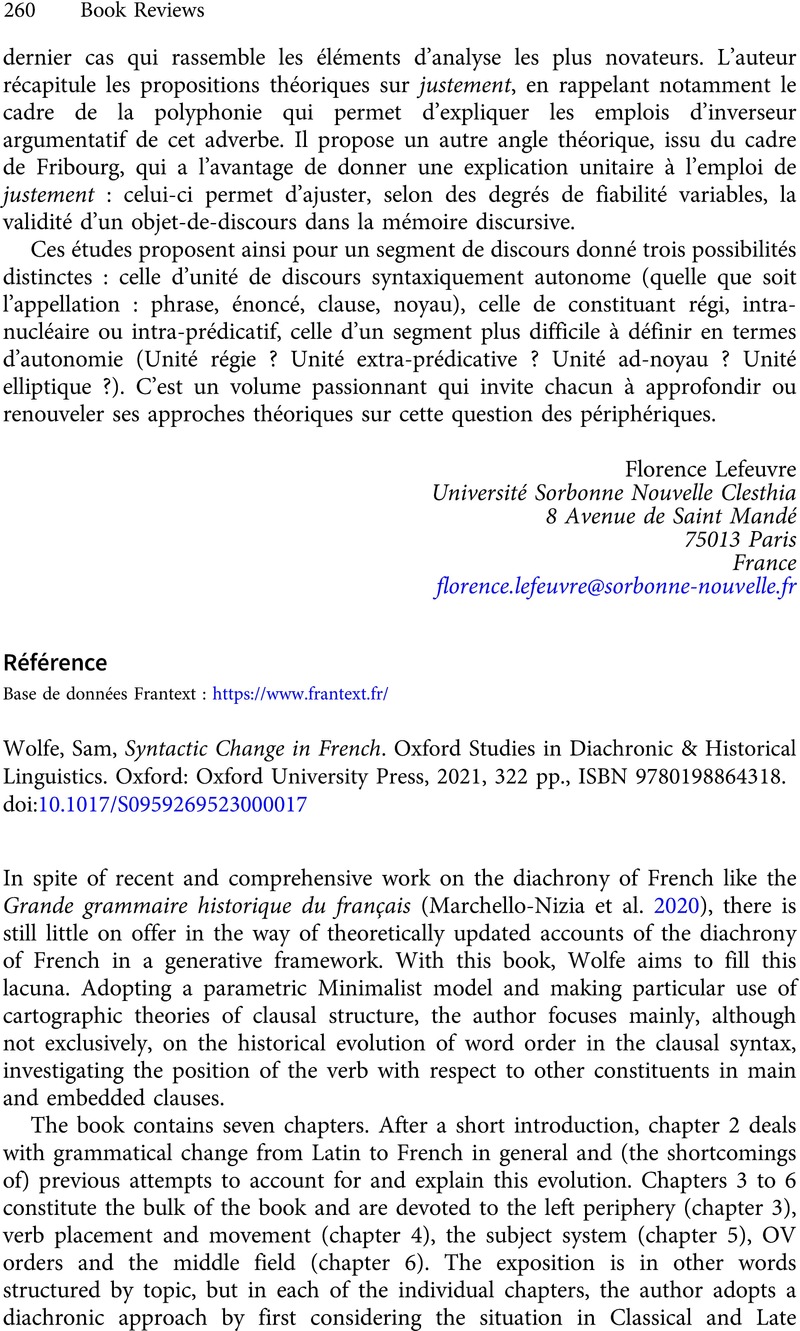No CrossRef data available.
Article contents
Sam Wolfe, Syntactic Change in French. Oxford Studies in Diachronic & Historical Linguistics. Oxford: Oxford University Press, 2021, 322 pp., ISBN 9780198864318.
Review products
Sam Wolfe, Syntactic Change in French. Oxford Studies in Diachronic & Historical Linguistics. Oxford: Oxford University Press, 2021, 322 pp., ISBN 9780198864318.
Published online by Cambridge University Press: 23 March 2023
Abstract
An abstract is not available for this content so a preview has been provided. Please use the Get access link above for information on how to access this content.

- Type
- Book Review
- Information
- Copyright
- © The Author(s), 2023. Published by Cambridge University Press
References
Danckaert, L. (2017), The Development of Latin Clause Structure: A Study of the Extended Verb Phrase. New York: OUP.CrossRefGoogle Scholar
Marchello-Nizia, C., Combettes, B., Sophie Prévost, S. et Scheer, T. (dirs), 2020. Grande Grammaire historique du francais. Berlin: De Gruyter
CrossRefGoogle Scholar



